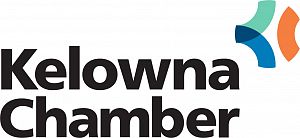As September opens, it’s timely to look at the economic predictors for the fall and winter for BC and Kelowna, and for Canada. Much of the data is encouraging for our province. With thanks to our sources, we'll synopsize here what we’ve found most engaging in our economic reading over the past few weeks.
First of all, the Bank of Canada’s July 13 announcement of maintaining its target overnight rate of 0.5 per cent, its Bank Rate of 0.75 per cent and its deposit rate of 0.25 per cent. Stable. The next rate will be announced within a few days on September 7. The Bank calls our economy “complex” – inflation still below 2 per cent but likely to go back up in 2017.
The next number we always look for is GDP (gross domestic product): globally, the projections are down slightly (2.9 per cent in 2016; 3.3 per cent in 2017 and 3.5 per cent in 2018). Causes: a slightly weaker US economy the first half of this year, plus Brexit, equal a bit of re-pricing. Again, the changes are slight, and mostly stable.
In Canada real GDP grew a bit in the first quarter, and dipped a bit in the second quarter. Drilling down to BC and Alberta GDP, the Alberta wildfires mean negative GDP throughout 2016 for our neighbour, but with an outlook for greater than usual growth in 2017 when the rebuilding efforts really kick in. In BC, again, the forecast is that we will lead the country in 2016 and 2017 in GDP, with our booming domestic economy and our red-hot housing market. Annual gains? In the 3 per cent range.
Federal infrastructure spending and other March federal budget measures continue to contribute to growth in the last half of 2016 for us here in the Okanagan.
Oil prices are always worth a monthly scan. Early 2016 predictions included a global rise: however, crude eased to about $45/barrel in August as global supply grew and demand weakened. Continuing slowing in prices is now forecast, according to the International Energy Agency. Weak demand and low prices for natural gas, and uncertainties surrounding major liquefied natural gas (LNG) projects will continue to dampen capital investment.
Much of the focus in the media this summer has been on housing: new rules, inventory, a seller’s market – we’ve all seen the headlines. At this point, predictions are that “the good times will continue.” Sales prices continue to rise, and in Kelowna, “Buyers from the Okanagan continue to be the largest purchasing group – 55 to 60 per cent of total buyers average over six years of tracking” according to the President of the Okanagan Mainline Real Estate Board (OMREB) earlier in August.
This comment was of course, in response to the quickly passed legislation taxing offshore buyers purchasing real estate in the lower mainland (15 per cent). The tax has hit immigrating families from the US and Europe, as well as from Asia and has been a headline-grabber nationally throughout August.
Chinese demand for all things Canadian remains strong, with new opportunities in agribusiness and tourism. Beijing has boosted the Canadian tourism industry, especially in the last two years. Canadian hospitality and its natural beauty are key draws for Chinese tourists.
Canada’s multicultural makeup facilitates greater tourism from China: Chinese Canadians are 4.5 per cent of the population (2011 Census) compared to 1.2 per cent for the U.S. This simplifies language and cultural issues, builds on existing connections, decreases prejudice, and facilitates a greater understanding of the spending habits of Chinese tourists.
Canada even has – despite being further away – a higher proportion of Chinese residents than Australia (4 per cent) – a testament to Canadian openness and cosmopolitanism. This number will be markedly higher for the 2016 census, and these ethno-cultural links, combined with a low Canadian dollar, provide many opportunities to strengthen tourism links. (from Global Risks Insights)
Could the new 15 per cent tax come to Kelowna and damp down our housing market? It’s possible, says OMREB. More interesting to our local business people are the changing demographics of home buyers: local buyers who will go on to purchase renovation services, appliances, furniture and other home-related products from local businesses.
Fully 24 per cent of buyers are now single females or single males; another quarter is two-parent families with children; couples (24 per cent) and empty nesters/retirees at 20 per cent. All good information as local businesses plan their product inventory buying for 2017.
Finally, there is the labour market, and the export market. Certainly, our staff at the Chamber have been kept busy this summer helping members with their Certificates of Origin for offshore shipments of lumber, produce and wine, particularly fresh cherries. This activity peaks in July and August, and is a service provided free of charge to Chamber members in good standing. (Certificates cost $75 per document for non-members.)
As to the labour market, while BC’s labour market continued to generate jobs – again leading Canada in job creation and economic growth – most of that employment growth was in the lower mainland, and in part-time employment.
Numbers are high, but would be even higher, if it weren’t for the continuing in-migration from other parts of Canada into BC as job seekers seek higher ground. The Alberta economy continues to impact employment growth in the Okanagan where we were steady/negative at -2.8 per cent.
As an aside, the Central Okanagan Economic Development Commission completed its “professional” business walks in July (they conduct business walks with Chamber participation throughout the year). Not surprisingly, given our economy this summer, every one of the 57 professional services firms surveyed were happy with their business.
“Usually with our Business Walk interviews, 80 to 90 per cent of the companies are positive about current conditions and the future,” said Corie Griffiths of the COEDC, which runs the Business Walk program.
In the third week of August, Manufacturing was the focus of the "Business Walk". The in-person survey is examining the human resources needs of about 50 manufacturing companies in our region.
We’ll close with four highlights from a new forecast from Central 1 Credit Union for BC for the next three years:
- Strong economic growth will continue through 2018
- Unemployment rate will decline from the current six per cent to below five per cent by 2018
- Provincial population will grow as more people move to the West Coast from other provinces
- International tourism is up due to the low dollar and will continue to grow
Welcome to fall everyone!
-KCC

